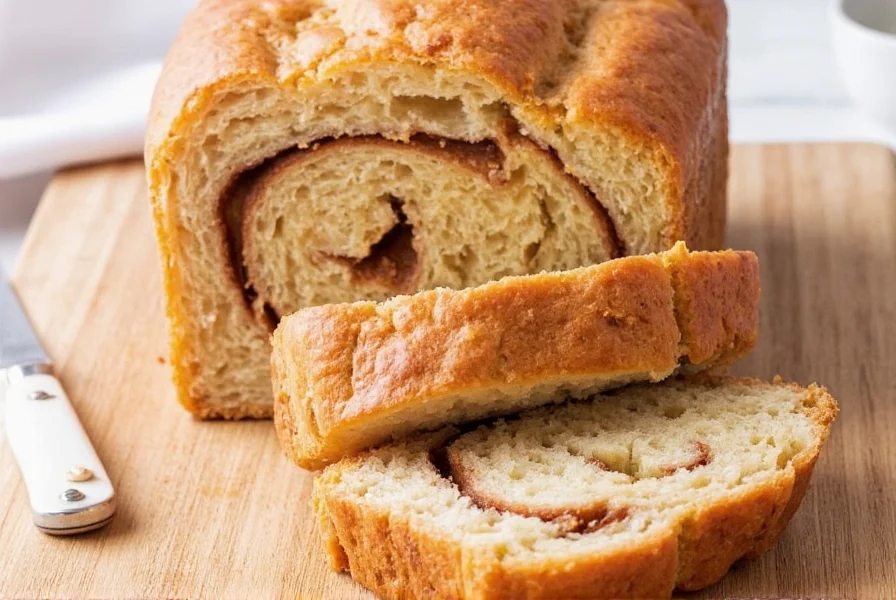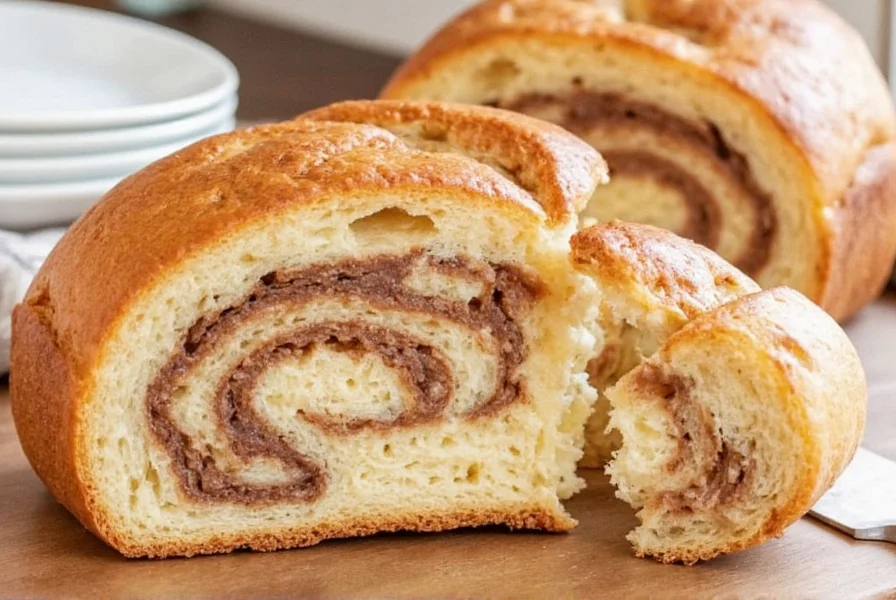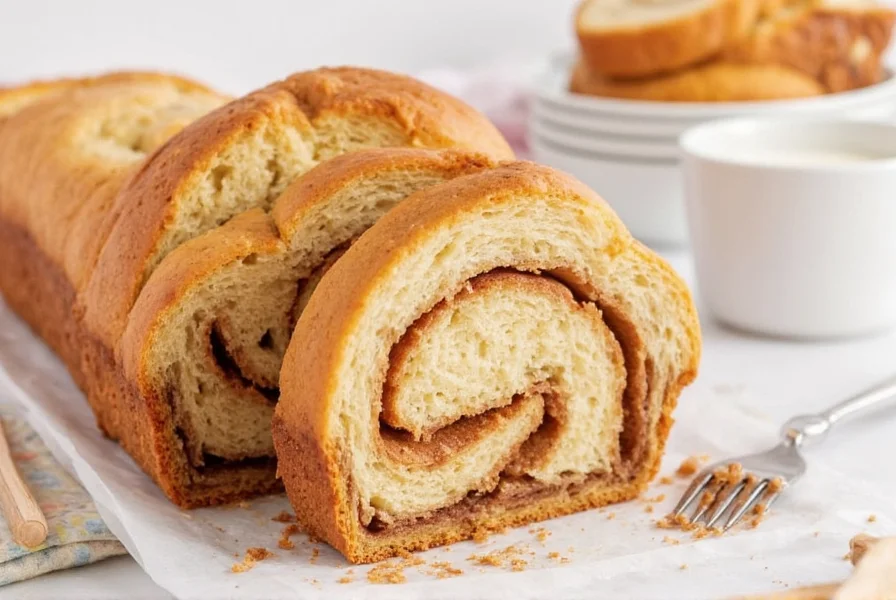The perfect recipe with cinnamon is homemade cinnamon swirl bread, featuring a soft yeast dough layered with a sweet cinnamon-brown sugar filling. This classic recipe requires basic baking ingredients including all-purpose flour, active dry yeast, milk, butter, sugar, eggs, salt, ground cinnamon, and brown sugar. The key to success is using fresh cinnamon for maximum flavor and allowing proper rising time for optimal texture.
There's something magical about the warm, comforting aroma of cinnamon baking in the kitchen. Whether you're an experienced baker or trying your first yeast recipe, this cinnamon swirl bread delivers impressive results with straightforward techniques. Cinnamon isn't just for fall—its versatile flavor enhances both sweet and savory dishes year-round, making it one of the most valuable spices in any kitchen.
Why Cinnamon Works Wonders in Baking
Cinnamon's unique flavor profile comes from cinnamaldehyde, the compound responsible for its distinctive taste and aroma. When used in baking recipes with cinnamon, this spice interacts beautifully with sugars, creating complex flavor notes that simple sugar alone can't achieve. The best cinnamon for baking recipes is Ceylon cinnamon for its delicate flavor, though Cassia cinnamon works well for stronger cinnamon-forward dishes.

Classic Cinnamon Swirl Bread Recipe
This tried-and-true recipe with cinnamon produces a tender, moist loaf with perfectly swirled layers. The secret? Don't skip the resting time between rolling and baking—it prevents the filling from leaking during baking.
Ingredients You'll Need
- 3¼ cups all-purpose flour (plus extra for dusting)
- 2¼ tsp active dry yeast
- ¾ cup warm milk (110°F/43°C)
- 2 large eggs, room temperature
- ¼ cup unsalted butter, melted
- ¼ cup granulated sugar
- 1 tsp salt
- 3 tbsp ground cinnamon (freshly ground preferred)
- ¾ cup packed brown sugar
- 2 tbsp unsalted butter, softened (for filling)
Step-by-Step Baking Instructions
- Activate the yeast: In a small bowl, combine warm milk, 1 tsp sugar, and yeast. Let sit 5-10 minutes until foamy.
- Make the dough: In a large bowl, whisk flour, remaining sugar, and salt. Add yeast mixture, eggs, and melted butter. Mix until a shaggy dough forms.
- Knead the dough: Turn onto floured surface and knead 8-10 minutes until smooth and elastic. Alternatively, use dough hook on medium speed for 6-8 minutes.
- First rise: Place dough in greased bowl, cover with damp cloth, and let rise in warm place for 1-1.5 hours until doubled.
- Prepare filling: Mix cinnamon and brown sugar. Set aside.
- Shape the loaf: Roll risen dough into 16x12 inch rectangle. Spread softened butter over surface, then sprinkle evenly with cinnamon-sugar mixture.
- Roll and shape: Starting from long side, roll tightly into log. Pinch seam to seal. Place seam-side down in greased 9x5 inch loaf pan.
- Second rise: Cover and let rise 45-60 minutes until dough crowns about 1 inch above pan rim.
- Bake: Preheat oven to 350°F (175°C). Bake 35-40 minutes until golden brown and internal temperature reaches 190°F (88°C).
- Cool: Remove from pan immediately and cool completely on wire rack before slicing.
| Baking Temperature | Rising Time | Internal Temperature | Storage Duration |
|---|---|---|---|
| 350°F (175°C) | 1-1.5 hours (first rise) | 190°F (88°C) | 3 days at room temperature |
| 45-60 minutes (second rise) | 2 months frozen |
Perfect Pairings for Your Cinnamon Recipe
Understanding which flavors complement cinnamon elevates your baking. This spice works exceptionally well with:
- Apple cinnamon recipes: The natural tartness of apples balances cinnamon's warmth
- Citrus notes: Orange or lemon zest brightens heavy cinnamon flavors
- Cream cheese: Creates the perfect contrast in cinnamon roll recipes
- Nuts: Pecans or walnuts add texture to cinnamon bread recipes
- Vanilla: Enhances rather than competes with cinnamon's complexity
Common Cinnamon Recipe Mistakes to Avoid
Even experienced bakers make these errors when preparing recipes with cinnamon:
- Using stale cinnamon: Ground cinnamon loses potency after 6 months. Test freshness by smelling—if aroma is weak, replace it.
- Overfilling the loaf: Too much filling causes leakage during baking. Stick to the recommended 3/4 cup.
- Slicing too soon: Cutting before completely cooled (2+ hours) compresses the soft crumb.
- Rushing the rise: Under-risen dough creates dense texture. Look for visual doubling, not just time.
- Burning the spice: Cinnamon can turn bitter if exposed to high heat too long. Add to fillings, not directly to hot pans.

Variations for Different Dietary Needs
Adapt this classic cinnamon bread recipe for various dietary requirements while maintaining great flavor:
- Gluten-free version: Substitute 1:1 gluten-free flour blend and add 1 tsp xanthan gum
- Dairy-free option: Use almond milk and coconut oil instead of dairy ingredients
- Reduced sugar: Cut filling sugar by 25% and add 1-2 tbsp applesauce to dough for moisture
- Vegan adaptation: Replace eggs with flax eggs (1 tbsp ground flax + 3 tbsp water per egg)
- Whole wheat twist: Substitute up to half the all-purpose flour with white whole wheat flour
Storing and Serving Your Cinnamon Creation
Proper storage maintains your cinnamon bread's texture and flavor. For best results:
- Cool completely before storing to prevent condensation
- Wrap tightly in plastic wrap or store in airtight container at room temperature
- For longer storage, freeze slices individually wrapped in plastic, then place in freezer bag
- Revive day-old bread by warming slices in toaster oven for 3-5 minutes
- Serve with butter, cream cheese, or a simple glaze of powdered sugar and milk
Frequently Asked Questions
Can I use cinnamon sticks instead of ground cinnamon in baking recipes?
While cinnamon sticks provide excellent flavor for simmering liquids like mulled wine or poaching syrup, they don't work well as a direct substitute for ground cinnamon in baking recipes with cinnamon. For baked goods, always use ground cinnamon as sticks won't distribute evenly through the dough. If you only have sticks, grind them in a spice grinder to make fresh ground cinnamon.
Why does my cinnamon bread collapse after baking?
Cinnamon bread collapse usually happens when the dough hasn't finished rising before baking or when the oven temperature is too high. Ensure your dough has doubled in size during the second rise and verify your oven temperature with an independent thermometer. Opening the oven door too early can also cause collapse, so resist checking until at least 30 minutes into baking.
How can I prevent cinnamon filling from leaking out during baking?
To prevent cinnamon filling leakage, make sure to pinch the seam tightly when rolling the dough. After shaping, let the loaf rest for 15-20 minutes before baking—this allows the gluten to relax. Also, don't overfill with too much cinnamon-sugar mixture; the standard 3/4 cup for a 9x5 inch loaf is optimal. Placing a baking sheet on the rack below catches any minor leakage.
What's the difference between Ceylon and Cassia cinnamon for baking?
Ceylon cinnamon ("true cinnamon") has a delicate, sweet flavor with citrus notes, making it ideal for subtle cinnamon recipes like custards or light cakes. Cassia cinnamon has a stronger, more pungent flavor that works better in robust recipes like cinnamon swirl bread or apple pie. For most baking recipes with cinnamon, Cassia is preferred for its bold flavor, but Ceylon works well when you want cinnamon to complement rather than dominate.
Can I make this cinnamon bread recipe ahead of time?
Yes, you can prepare cinnamon bread ahead of time. After the second rise, cover the loaf pan tightly with plastic wrap and refrigerate overnight. The next morning, remove from refrigerator 30 minutes before baking to take the chill off. You may need to add 5-10 minutes to the baking time. Alternatively, bake the bread completely, cool, then freeze slices for quick reheating.











 浙公网安备
33010002000092号
浙公网安备
33010002000092号 浙B2-20120091-4
浙B2-20120091-4